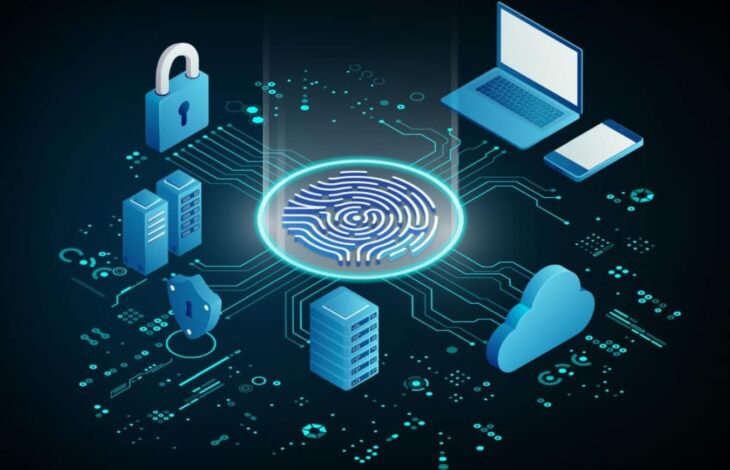The world has changed a lot. From the slightest building block of computers to the entirety of how we view civilizations altogether has changed a lot more than we think. It is essential to realize from where these changes occurred and why they did. One of the most significant reasons for this cause is mainly due to the inventions of digital technology and computers.
Computers started with wanting to do slightly complicated calculations to now be able to completely guide astronauts in space and control shuttles traveling at 25000 km per hour into the outer orbit of the earth. We’ve come a long way, but the truth is we’re only getting started.
We hear the phrase that the future is near, but it is highly misconceptualized because it is already here. We’re moving at an exceptionally enriching phase where we are starting to phase out the differences in the present and the future.
It makes sense to traverse only one at a time, but we’ve made sure the end is already here. What if we told you you’d never have to store another one of your files with you or anywhere close to you? What if we told you that we’d keep your info for you deep amongst a cloud?
Before we get into what it means, click here to know more about what we’re talking about. This article will talk about the basics of cloud computing and security and the pros and cons of outsourcing it. With that being said, without any further ado, let’s get into this!

Source: Aureon.com
Contents
Definition Of A ‘Cloud’
The term cloud has been used in many different ways, and it has many different definitions, so to learn about cloud computing. First, we need to have a standard definition of what it means to be in the cloud in the first place. There are three layers to cloud computing.
There is the application layer, Then on the second layer, there is the platform, and then on the final layer is the infrastructure. Companies use them differently based on what their application is. Let’s say you are a company, and you have a web application for Instant Messaging between its members or customers.
Initially, you start with a few users talking to each other, and then they start telling about your site to their friends, and they then say to their friends and so on. Let’s say within a few weeks, and your web application has taken off.
If you are running your own local data center inside your company, your equipment cannot keep up with the high demand. Thus the user’s messages might not reach their destination, or the web application can crash altogether, or the service might become annoyingly slow.

Source: techproviderzone.com
What Is Cloud Computing?
Cloud is just a collection of computing services such as servers, storage, networking, databases, and applications delivered over the internet, which helps developers focus on their project rather than on the infrastructure that powers it.
Cloud Computing offers much flexibility for situations where you don’t know or can’t know how much computing power you will need. Thus, companies can convert their capital cost to operational cost. Therefore they can pay for what they use rather than pay for an idle infrastructure. Cloud Computing comes with the maintenance built-in for several products.
This means that using the cloud results in minimal work to host our applications compared to the other options. If you think about it, Cloud Computing, in many ways, represents the next layer of abstraction in computing infrastructure. Rather than owning the computing, storage, or networking infrastructure, we can use the API-based approach to remotely work with the services and integrate them into our workload.
This API-based approach frees up time and resources for developers to concentrate on their applications. Moreover, cloud services are highly flexible, with most requiring no provisioning.
Due to this, these services allow us to scale up and down our applications with no advanced provisioning while paying only for the resources we used.

Source: savvycomsoftware.com
What Is Cloud Security?
Just because it’s in the cloud doesn’t mean it’s safe. Cloud Security is the practice of protecting cloud-based data applications and infrastructure from cyber-attacks. As cloud adoption grows, more and more critical applications and data moved to the cloud as well.
Most major cloud service providers, or CSPs, offer standard cybersecurity tools but don’t always provide enough coverage for what the enterprise requires, increasing the risk of data theft and loss. Typically, the CSP is responsible for the software networking and facilities that run the cloud but not responsible for security in the cloud, like how the CSP resources are configured and used.
So Cloud Security Services attempt to fill these gaps in this shared responsibility model, it’s essential that the CSP vendors and the customer define who’s responsible for what security measures, some cloud security tools supplied by either the CSP or the customer include CWPPS, or cloud workload protection platforms, which protect workloads like VMs applications or data consistently.

Source: phoenixnap.com
Pros And Cons Of Cloud Security
Pros
1. Pay as peruse
So suppose if you have taken 500 GB of space in a cloud, you have to pay for 500 GB of space. You don’t have to pay anything beyond that.
2. Low-cost infrastructure
Now before we describe this or elaborate on this, we’ll ask you this one great question. What do you get for free in today’s world? Of course, nothing but good news about cloud computing.
If you have taken services on the cloud, you don’t have to pay anything to set up the infrastructure. So this is a tremendous advantage of cloud computing.
3. Automatic application update
Now, this is our personal favorite because, you know, manually updating applications is tedious, so if your applications are on cloud services, they’ll get updated automatically.

Source: resourcecenter.infinit-o.com
Cons
1. High internet speed
If you would personally ask us to watch whether this is a challenge, yes, see, we don’t think it’s a challenge. Instead, we would say that it’s a need.
In today’s world, if you want to access technology, of course flawlessly, you need to have excellent internet speed. So we don’t think this is a challenge, and with 5g coming.
